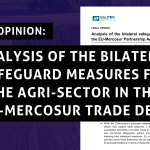The origins of the concept of climate finance in the context of the UN climate negotiations and the UNFCCC Agreement to provide it.
The concept of climate finance has existed for many years. It was first set out at the first UNFCCC meeting in Rio de Janeiro in 1992, where the agreement reads, ‘that developed countries shall provide “new and additional financial resources” to developing countries to support meeting the full and incremental costs of climate change.’
This commitment acknowledges the need to support developing countries in their efforts to limit the causes of climate change whilst also adapting to its impacts. However, despite initiating the term ‘new and additional’, there has been no agreed definition on what that really means, and how it relates to existing flows of support to developing countries. CAN Europe understands that climate finance should be financial support provided over and above existing aid in order for developing countries to deal with the additional challenges and problems presented by climate change.
Over the years, the initial concept set out in Rio 1992 has been altered and expanded to include various sources of financial support, including private finance and domestically sourced finance. The UN climate negotiations continue to discuss and debate under these notions; at present, Parties are analysing how to reach the target of providing US $100 billion per year by 2020 in climate finance to developing countries. This target was set in the Copenhagen Accord, which further states that finance can come from a ‘wide variety of sources, public and private, bilateral and multilateral, including alternative sources of finance’.
This commitment was further built on through the establishment of a specific global fund for climate action, called the Green Climate Fund. Additionally, the commitment to reach the US $100 billion target has been re-iterated in the recent adopted Paris Agreement; “Developed country Parties shall provide financial resources to assist developing country Parties with respect to both mitigation and adaptation in continuation of their existing obligations under the Convention”.
CAN Europe believes that climate finance provisions need to be ambitious and steadily increased to enable developing countries to enhance their ambition beyond what they can do with domestic resources, laying out the mitigation potential that could be unlocked with scaled-up financial resources. Also, developing countries, particularly the poorest and most vulnerable countries, will require increasing amounts of financial support to adapt to a changing climate and cope with the impacts.
For more information on CAN’s position please see CAN International’s position on finance for COP21 & submission on accounting climate finance.



